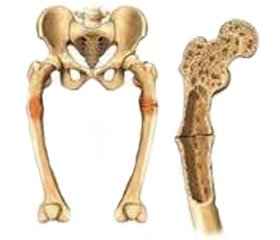The article was published on p. 83
Introduction. The rachitic remains one of the most common diseases in early-aged children. The symptoms of rachitic are detected in more than 50% of infants [1]. Frequent use of products of a children’s food with addition of vitamin Д is at the cause of change of a clinical picture of disease. The present-day course of the rachitic is characterized by slight forms of this disease without evident clinic symptoms. This is due to the increased role of perinatal and postnatal predisposing risk factors. In Belarus, the recorded incidence of rickets is extremely low — about 20–25 cases per 1000 infants [2]. Obviously, recorded moderate and severe forms of rickets. Mild forms are not detected and not treated. However, the transfer could be the cause of rickets pathology associated with the violation of calcium-phosphorus metabolism in older children and adults: scoliosis, flat feet, caries, violation of visual acuity, osteoporosis, muscle hypotonia and autonomic dysfunction [3]. Consequently, the investigation of rickets underestimated by pediatricians, and the attitude of the medical community to this pathology requires revision.
The aim of our work was to exam the rachitic clinical manifestation in the first-year infants at modern stage, depending on preventive vitaminization.
Material and methods. We have examined 175 histories of a postnatal development of infants up to one year old. 63 of them were under natural feeding and took a prophylactic dose of the vitamin D. 82 infants were fed with adapted milk formula containing vitamin D and did not take additional vitaminization. 30 infants, who were under natural feeding up to 6-month age, underwent a nonspecific rachitic prophylaxis only. The clinic anamnestic data of infants in these groups were homogenous.
Results. These initial clinical examination and analysis of the stories of children in the first months of life have shown that all children have the same clinical and medical history. In 28.6 % of the children were factors predisposing to a breach of calcium-phosphorus metabolism (the time of birth from June to December, prematurity, morphological and functional immaturity, birth weight over 4 kg, the children of twins or from repeated birth with small intervals, particularly the antenatal period, the pathology of the liver, kidneys, skin, malabsorption syndrome, frequent respiratory and intestinal infections, receiving anticonvulsants). The signs of rachitic are revealed at 65 (37.1 %) of the first-year old infants. Risk factors of development of the rachitic in the anamnesis have been revealed at 100 % of children in this group. None of the infants showed severe signs of the rachitic. The frequency of was lower in the group of infants who took vitamin D (3.2 %; р < 0.001). The clinical signs of the rachitic more often were diagnosed in infants under natural feeding without additional vitaminization (46.7 %; p < 0.001), as well as in the group of infants who had artificially fed (46.7 %; р < 0.001). The respiratory morbidity in the breast-fed infants taking vitamin D was 3 times lower and the cases of neurologic-and-behavioral maturation disorder were much rarer than in other groups (p < 0.05) in the first year.
Conclusion. Thus, wide circulation of the rachitic is determined now by a decisive role of prenatal and postnatal predisposing risk factors. The most effective method of the rachitic and respiratory morbidity prophylaxis is a preventive vitaminization of the breast-fed infants and the infants fed with adapted milk formula having risk factors.
Список литературы
1. Tracher T.D. Nutritional rickets around the world: causes and future directions / T.D. Tracher, P.R. Fisher, M.A. Strand // Ann. Trop. Paediatr. — 2014. — Vol. 26(1). — P. 1-16.
2. Харченко О.Ф. Современные аспекты клинического течения рахита у детей Беларуси / О.Ф. Харченко, Т.И. Ровбуть // Buletin de perinatologie. — 2013. — № 2(58). — 3(59). — P. 308.
3. Pettifor J.M. Nutritional rickets: deficiency of vitamin D, calcium or both? / J.M. Pettifor. — Am. J. Clin. Nutr. — 2014. — Vol. 80 (6 Suppl.). — P. 1725S-1729S.

